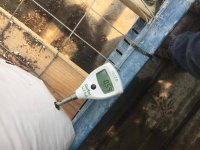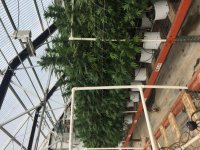So my take...and take it for what you think it is worth. The secret to growing big plants is serious nutrition provided on a constant basis. You cannot grow either a fat kid or a linebacker unless you feed them. The difference is the quality of that nutrition, not the calories.
And the calories can be measured as soil ec like this

There are two paths to go by. There is the screws path where you just add water. In that case you can go lower EC but bigger root ball. Smart pot has you covered
Or you can go smaller pot and feed and run higher ec. In that case shallow is better
And the calories can be measured as soil ec like this

There are two paths to go by. There is the screws path where you just add water. In that case you can go lower EC but bigger root ball. Smart pot has you covered
Or you can go smaller pot and feed and run higher ec. In that case shallow is better




